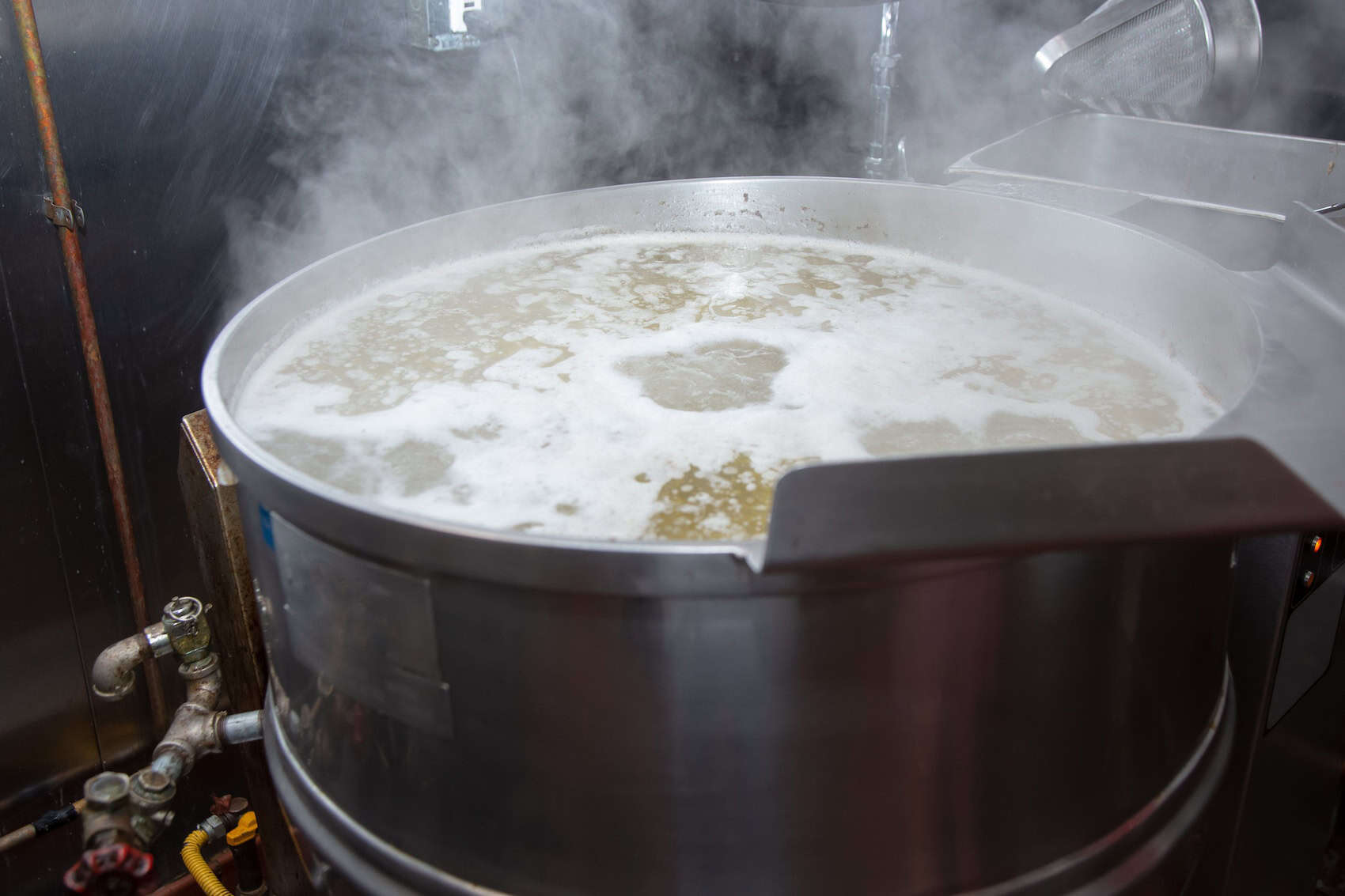By Pat Finley – Master Certified Lead TechnicianSteam kettles are crucial in commercial kitchen equipment maintenance and are one of the workhorses of the commercial food service industry. They range in size from small tabletop models to large industrial floor-mounted units with mixing attachments. Whatever your volume needs, there’s a size for you. The options for these kettles are wide and vary based on the type of cooking. Many units tilt for easy pouring and cleaning, while others utilize a draw-off valve on the bottom for draining. Units also come in a variety of power options, including gas, electric, and steam-powered. Oftentimes, a water faucet is mounted to the unit to assist with filling for cooking or cleaning.
Steam kettles get their name from the steam jacket surrounding the cooking cavity. The steam never comes into contact with the product you are cooking. These jackets wrap up and around the sides of the kettle, offering even and fast cooking. Steam kettles take water and heat it, creating steam in a pressurized jacket, which allows them to heat faster.
Learn More Regarding How Commercial Steam-Powered Equipment Works – Click Here
Tips for Commercial Kitchen Equipment Maintenance and Optimal Steam Kettle Performance
Slower-than-normal cooking can be an indicator of an issue with your kettle. Here are a few things you can check:
• Check your pressure gauge. With the kettle off and cold, it should be in a vacuum or in the “green” portion of the gauge. The kettle jacket needs to be in a vacuum to aid in the heating process. Water boils at a lower temperature in a vacuum.
• Pressure relief valves should not be leaking water or steam. This indicates a bigger problem that will need to be addressed by a technician.
• Indicator lights, if equipped, can let you know when the unit is heating, experiencing an error, or more.
• Tilt systems can be electric motor, manual crank, or manual pull-over. All operations should be smooth and easy to perform. If it feels like it is binding, stop and do not force it. You can damage the tilt mechanism, or worse yet, spill hot food onto yourself.
• If your unit will not heat, verify that it is plugged in and that the gas or electric power is turned on.
• If your unit is equipped with a water faucet, ensure it is not leaking. Leaking faucets can cause multiple issues in a kitchen, including possibly shorting out the unit.
Contact General Parts for Commercial Kitchen Equipment Maintenance!
For more information on commercial kitchen equipment maintenance or to place a service call, please reach out to your local General Parts branch.






